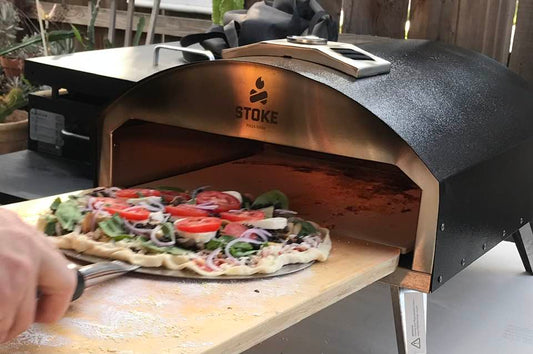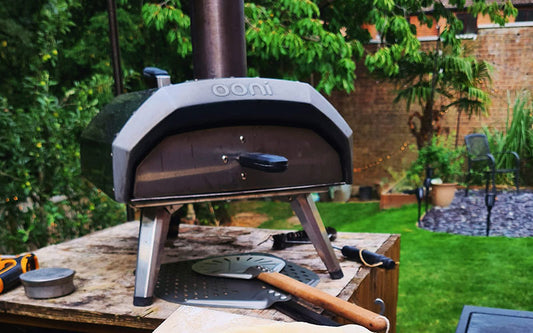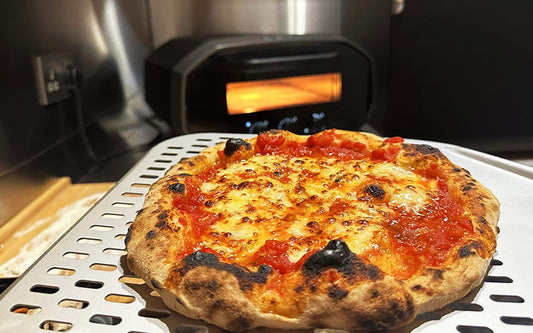Ah, the mystery of the soggy, floppy pizza, a conundrum that has stumped pizza aficionados for centuries. But fear not, for I have some tricks up my sleeve to prevent this culinary catastrophe.
One of the easiest ways to fix a soggy pizza is to pop it in the oven. Preheat your oven to 400 degrees Fahrenheit, place the pizza on a dry, non-stick baking sheet, and bake for about 10 minutes. This will help to crisp up the crust and melt the cheese to gooey perfection.
If you don’t have access to an oven, don’t despair! There is more than one way to rescue your soggy pizzas. So the next time your delivery arrives a little wetter than expected, don’t despair. Refer to the guide below to find a quick way to fix the soggy mess.
Why Did My Pizza Arrived Soggy on Delivery?
Here comes the age-old question: why does pizza always seem to arrive soggy, no matter how carefully it’s transported? It’s a mystery that has plagued pizza lovers for centuries, but fear not – I have some theories.
Underbaked or unevenly baked crust is the culprit almost 90% of the time, speaking from personal experience. The crust is like the foundation of a house. If it’s not strong and sturdy, the whole thing is going to come crashing down (or, in this case, become a soggy mess).
If the crust isn’t cooked to perfection, it can’t hold up to the weight of all that delicious toppings and cheese.
Then there’s the issue of the toppings. Too many toppings can weigh down the crust and make it soggy, kind of like when you try to carry too many grocery bags, and they all end up tearing. And let’s not forget about the sauce – too much sauce can turn your pizza into a wet, mushy mess.
And finally, there’s the delivery factor. You know how it goes: you order a delicious, piping-hot pizza, and by the time it arrives at your doorstep, it’s lukewarm and sad. It’s like the pizza equivalent of the “five-second rule”.
Every second it spends out of the oven, it loses a little bit of its structural integrity.
Homemade Pizza Crust Is Soggy in the Middle or Bottom? Here’s Why
There are a multitude of reasons why a homemade pizza crust might end up soggy in the middle, and it can be a frustrating problem to solve. But don’t worry, for I have some theories that might help shed some light on the situation.
1. You’re Using the Wrong Bakeware
First and foremost, let’s talk about the pan or stone you’re using. If it’s of subpar quality or not made for pizza, it might not be able to distribute and transfer heat optimally, resulting in uneven cooking.
A thin pizza peel, pan, or stone doesn’t conduct heat evenly due to the lack of enough thermal mass to store it. This can leave the middle of the crust soggy while the edges and bottom are overcooked.
2. The Bakeware Isn’t Fully Preheated
Another factor to consider is whether or not your pan or stone is fully preheated. If it’s not hot enough, it can result in cold spots on your pizza, preventing the middle of the crust from cooking properly. This is kind of like trying to cook an omelet on a cold pan – it’s just not going to turn out right.
3. Oven Temperature Not High Enough
The temperature of the oven is also a key factor in preventing a soggy middle. If the oven isn’t hot enough, the crust will take longer to cook and become soggy in the center. It’s like trying to bake cookies in a toaster oven – it’s just not going to cut it.
Your oven should be set at the maximum temperature for pizzas. Domestic ovens can go as high as 550 degrees F, while some only go as high as 500 degrees.
Anything below that range will require you to make some serious modifications in the dough hydration. From what I have observed, a pizza crisper or perforated pizza pan is your best friend when baking in an oven with a maximum temp below 500 degrees.
4. Too Many Toppings
Now, let’s talk about toppings. If you’re using too many wet toppings on a thin crust, it can create an overly moist environment, leading to a soggy middle. And if you’re using fresh mozzarella, be sure to add it at the right time.
Adding it too early can result in a soggy crust while adding it too late can result in a burnt crust. And if you’re cutting the mozzarella too small, it can create too much surface area, leading to a soggy middle.
| Reason | Solution |
|---|---|
| Too much sauce | Use less sauce or evenly distribute it on the crust. |
| Overloaded with toppings | Use a pan with non-stick coating |
| Dough not rolled or pressed thin enough | Roll or press the dough out thinner before adding toppings. |
| Not pre-baking the crust | Pre-bake the crust before adding toppings to create a crispier base. |
| Not using a pizza stone or pizza steel | Use a pizza stone or steel to achieve a crispy crust. |
| Using a pan with low sides | Use a pan with higher sides to prevent sogginess. |
| Use a pan with a non-stick coating | Use a pan without non-stick coating to achieve a crispier crust. |
| Not using enough heat | Use high heat to achieve a crispy crust. |
| Not letting the pizza cool properly | Let the pizza cool for a few minutes before slicing to prevent fogginess. |
Fool-proof Tips to Prevent Your Pizza From Getting Soggy
Now that you know the pitfalls, let’s talk about how to prevent them. Here are some fool-proof tips for preventing your pizza from getting soggy:
High Temperature = Crispy Crust
When it comes to baking a perfect pizza, oven temperature is one of the most crucial factors to consider. Cooking your pizza at a higher temperature is the ultimate way to avoid a soggy crust, and the reasoning behind this is quite simple.
A higher oven temperature will result in a faster cooking time for your pizza, so the heat will reach the crust quickly and cook it at a faster pace. This will help evaporate excess moisture from the dough.
It’s important to note that the exact temperature will vary depending on the type of oven you are using. For a home oven, a temperature of 500 to 550 degrees Fahrenheit is ideal, while for a wood-fired oven, it can go as high as 800-1000 degrees Fahrenheit.
Fully Preheat Your Pizza Stone or Pan
Preheating your pizza stone or pan is an important step in ensuring that your pizza crust doesn’t turn into a floppy mess.
When you place raw dough on a cold pizza stone or pan, it will take longer for the heat to be transferred to the dough. This can cause the dough to become too moist and release steam.
The moisture from the steam can then be trapped under the dough, resulting in a soggy crust. On top of that, the cheese and toppings will also start to release moisture, contributing to a soggy crust.
When the bakeware is at the right temperature, the heat is transferred to the dough immediately. So it helps to form a crispy crust and evaporates any moisture that might be present. The heat also helps the cheese to melt quickly and the toppings to cook evenly.
To fully preheat the pizza stone or pan, you place stone/steel at the lowest rack. Crank up the temperature to the highest setting. Stones can take up to an hour to fully preheat. If you want to be precise, consider using an oven thermometer.
Avoid Underbaking
When the dough is not cooked through, it will remain raw in the center and won’t be able to support the weight of the toppings. Underbaking the crust can also lead to a doughy texture. The resulting crust may lack the structure to hold up when the cheese and toppings are added.

To avoid underbaking the crust, ensure that the oven is preheated to the correct temperature. Use a thermometer if needed, and bake the pizza for the appropriate amount of time. Pay attention to the visual cues such as the color of the crust, the cheese and toppings, and the overall appearance of the pizza.
The More the Toppings, The Thicker the Crust Should Be
The thickness of the crust and the quantity of toppings are directly related to the final texture of the pizza crust. A classic Neapolitan or NY-style crust can’t support a large amount of toppings without becoming soggy.
When you load a thin crust with heavy toppings, the weight of the toppings can compress the crust and release moisture, resulting in a soggy texture. Additionally, the toppings can also release moisture as they cook, which can further contribute to a soggy crust.
On the other hand, deep-dish or Detroit-style pizzas have a thicker crust that can support a heavier load of toppings. The thick crust allows the pizza to cook for a longer time at a lower temperature. This helps to release moisture and keep the crust crispy.
Next Read: Pizza Pan vs Pizza Crisper: A Comparison and Guide
A regular Domino’s or Pizza Hut hand-tossed crust can also support heavy toppings. It’s more medium-thickness and provides a good balance of holding toppings and not getting soggy.
Exercise Caution If Using Fresh Mozzarella
Fresh mozzarella is a high-moisture cheese that can contribute to a soggy pizza crust if not used correctly. The high moisture content in fresh mozzarella can release liquid as it cooks, which can make the crust soggy.

Additionally, if you cut the cheese into small pieces and add too much to the pizza, it can weigh down the crust and release even more liquid.
There are three steps to avoid this issue –
- One is by straining the cheese overnight before using it. This can help to remove some of the excess liquid and make the cheese less likely to release moisture as it cooks.
To strain the cheese, you can place it in a fine-mesh strainer and place the strainer over a bowl. Cover the cheese with plastic wrap and put it in the refrigerator.
Next Read: The Perfect Rise Time: How Long to Leave Your Pizza Dough to Proof
The cheese should be left in the refrigerator overnight to allow time for the liquid to drain out. After the cheese has been strained, it should be denser and more flavorful.
- Another way to avoid adding too much liquid to your pizza is by cutting the fresh mozzarella into larger, thicker slices. This can help to reduce the amount of cheese on the pizza and prevent the crust from becoming soggy. Also, this will enhance the flavor of the cheese by having less on the pizza.
- Lastly, if you’re using fresh mozzarella and your oven doesn’t go higher than 500 degrees, add the cheese later on in the baking process. Put the cheese once the crust is cooked halfway through with the sauce on. Then bake again until the cheese is melted.
Or, you could avoid all that hassle by opting for dry mozzarella.
How to Make Matzo Pizza Not Soggy?
Matzoh pizza is a pizza-like dish made with matzoh. It’s a type of unleavened bread that is traditionally eaten during the Jewish holiday of Passover. The dish is made by brushing matzoh with oil and toppings and then baking it in the oven to make a crispy, savory treat.
To make matzoh pizza not soggy, it is important to start with a dry and crisp matzoh. One can toast the matzoh in the oven for a couple of minutes to dry it out before adding any toppings. Once the matzos are nice and toasty, do the following:
- Create a barrier between the toppings and the crust by sprinkling a copious amount of cheese. Before adding any toppings, spread a generous amount of grated cheese over the matzoh.
- Matzoh is a dry bread, and its characteristic is crispy. Therefore, using a minimal amount of toppings that contain high moisture is important.
- Preheat the oven to 500F. Cook the matzoh pizza for a short amount of time, say 5-7 minutes, or until the cheese is melty.
How to Fix Soggy Pizza After Baking?
Here’s some good news for you – a soggy pizza is not the end of the road. It can be fixed most of the time by using the following tricks:
Place the pizza back in the oven and bake for another 5-7 minutes.
You can also put the pizza directly under the broiler for a minute or two. You got to keep a close eye on the pie, though, or it will burn.
How to Reheat Pizza in the Microwave Without Getting Soggy
Reheating pizza in the microwave can sometimes result in a less-than-ideal texture. However, thanks to the internet, I have finally discovered the best way to microwave a pizza.
All you have to do is place a microwave-safe glass of water in the microwave next to the pizza and heat it for around 45 seconds. Place the pizza on a plate and add a cup or glass of water. Heat on high for 30 to 45 seconds. And voila!
Why Is My Cauliflower Pizza Soggy – Causes and Solution!
Cauliflower pizza is one of the healthiest alternatives to regular pizza. It’s a great way to get your daily dose of veggies without sacrificing taste or texture. But if your pies are soggy and not crunchy, then it’s probably because you’re using too much sauce. To prevent this, use a well-drained and squeezed cauliflower before making the crust. Also, use wet toppings sparingly.
Sometimes, the culprit is the cauliflower itself. When cauliflower is processed and used to make a cauliflower crust, it releases some of its moisture. This moisture can make the crust soggy.
Prevent this by preheating the oven to a high temperature and cooking the pizza for a short amount of time. This will evaporate excess moisture and create a crispy crust.
Parting Words of Wisdom
So there you have it, folks, the infamous enemy of pizza lovers everywhere – the dreaded soggy crust. Thankfully, with a little bit of know-how and some simple solutions, you’ll be on your way to crispy, delicious pizza in no time. Just remember, the key to preventing soggy pizza is all in the details.
And when all else fails, don’t forget the age-old wisdom – if it’s too soggy for your liking, just throw it under the broiler for a minute or two. Happy baking!




